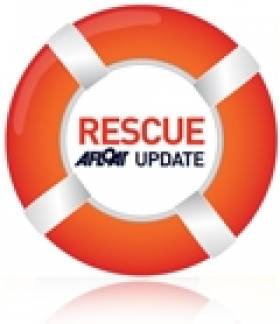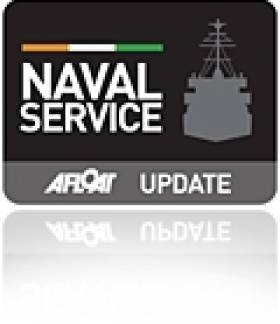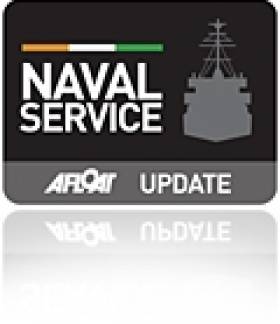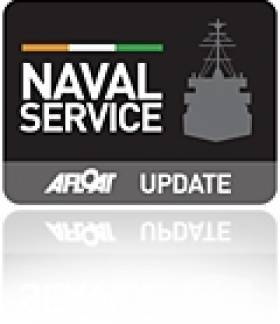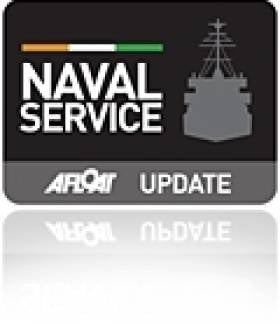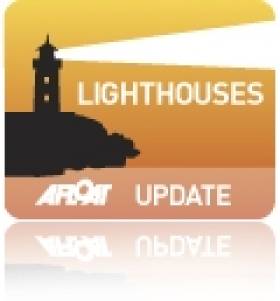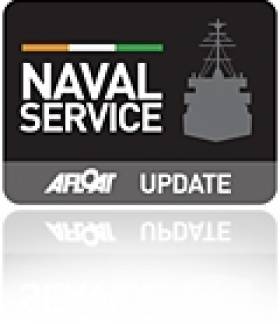Displaying items by tag: naval service
Navy Tows Stricken Norwegian Yacht To Shore
#Rescue - RTÉ News reports that a Norwegian couple have been rescued after their yacht suffered damage off the south coast.
The vessel sailed by the couple in their late 60s apparently dismasted some 160 miles off the Cork coast en route from the Azores to the Shetland Islands.
They were discovered by a passing fishing trawler early yesterday (21 May) and assisted last night by the Naval Service vessel LE Aoife, which is currently towing the stricken yacht to Castletownbere.
Lt Captain Erica Downing of the LE Aoife told RTÉ that the couple were "extremely lucky" to be spotted by the French fishing boat, having not seen any other sea traffic the previous fortnight.
RTÉ News has more on the story HERE.
Naval Service to Sell Off Pair of Older Patrol Vessels
#NavalService – Two Irish-built navy patrol ships launched at Verolme Cork Dockyard, are to be sold off after 40 years of service according to the Herald.
LE Emer (P21) and a sister ship LE Aoife (P22) were built between 1978 and 1980 at the Rushbrooke shipyard near in Cobh, Co Cork.
The first ship of four in the Offshore Patrol Vessel (OPV) class built in Cork in 1972, the LE Deirdre (P20) , was decommissioned in 2001 and sold for €190,000. She was later converted into a luxury yacht.
The two ships will be replaced by two new OPVs currently under construction in the UK.
Naval Service ‘Flagship’ Visits Adopted Homeport of Flag Festival and Irish Diaspora Forum
#FlagshipsHomeport -With newcomer Dublin Bay Cruises running from the East Pier jetty in Dun Laoghaire Harbour, this led to the Naval Service 'flagship' L.E. Eithne (P31) having to take a different berth than usual at her adopted homeport, writes Jehan Ashmore.
The recent two-day call of L.E. Eithne saw the flagship make the unusual step of berthing at Carlisle Pier, the location chosen by the Dun Laoghaire Harbour Company for a proposed Irish International Diaspora Centre, a landmark building which is to form as a focal point of the port's Masterplan.
L.E. Eithne came alongside (berth No. 3) where the conventional ferry from Holyhead used to dock until 1996. To those of a different generation, memories will recall the 'mail' boats that docked also on the adjacent berth that faces the East Pier. Going back further was the era of the steam-packets that also plied the 60 nautical mile route to Anglesea.
Together these forms of vessels can trace the history of some 200 years of passenger services linking Ireland and Wales, and where Carlisle Pier was the embarkation point for thousands of Irish emigrants who set off to a begin a new life with our nearest neighbour and beyond.
As for the flagship the L.E. Eithne, she has represented the state proudly as a floating ambassador during her near 30 year career. She has visited many shores aboard, notably as the first Naval Service vessel to cross the Atlantic in 1986, where she sailed to the United States visiting Hamilton, New York, and Boston.
Such seafaring voyages that 'fly the flag' strengthen the ties between nations and heightens the importance of history, heritage and the cultural identity of flags and emblems.
On a related note the Genealogical Society of Ireland and the National Maritime Museum of Ireland, are to jointly host The Bratacha Festival of Flags and Emblems 2013 in the museum which is open to visitors free of charge on Friday 10 and Saturday 11 May.
Following the festival, the third Global Diaspora Forum, which is a celebration of the 70m Irish diaspora and is to be held in Dun Laoghaire on 14-15 May.
The forum has been held annually in Washington and, this year, it will run simultaneously in Washington and Dublin: primarily in the Killiney Castle Hotel and Dun Laoghaire County Hall.
#FlagshipVisit – The Naval Service 'flagship' L.E Eitnne (P31) is to take part in the In Humbert's Footsteps, Mayo's flagship Gathering event, when the festival is to be held in August.
The vessel will sail into Kilcummin, Mayo (weather permitting) on Saturday August 17 and will provide a wonderful backdrop to what promises to be an exciting re-enactment of the events of 1798.
Mayo native Commodore Mark Mellett (DSM), Flag Officer Commanding Naval Services said: "I am delighted that the Minister for Defence and the Chief of Staff have sanctioned the use of the Irish naval service flagship LÉ Eithne for the Gathering event In Humbert's Footsteps. For more the Mayo Advertiser has a report.
Navy Detain French Fishing Boat off Kerry Coast
#FisheryDetention - Naval Service OPV LE Niamh (P52) has detained a French fishing boat about 30 nautical miles off the coast of Valentia, Co Kerry, reports the Irish Examiner.
The fishing vessel was detained for an alleged under-recording of catch and is to be escorted to Castletownbere, where it is expected to arrive this morning and then handed over to the Gardaí.
Naval Service Detains Northern Ireland Fishing Vessel
#Trawlerdetention – The skipper of a Co. Down fishing vessel is due in court in the Republic after the Irish Naval Service detained the boat off the Co. Galway coast.
It is understood the skipper of the Kilkeel based vessel was detained on suspicion of fishing illegally inside the Republic's waters.
The Archane, was boarded by the Irish navy on Tuesday afternoon, about 11 nautical miles south of the Aran islands.
The fishing vessel was then escorted by the Irish naval vessel, L.É.Aoife (P22) to Rossaveal. To read more the BBC has a report.
Expansion On The Cards For National Maritime College
#NMCI - The National Maritime College of Ireland (NMCI) is to expand into Asia and the Middle East, as The Irish Times reports.
The Cork Harbour-based college, which provides training and education for the Merchant Marine and non-military needs of the Naval Service, is set to provide training and consultancy services in the Gulf region, Vietnam and Malaysia via its commercial wing NMCI Services.
That was the message from Dr Brendan Murphy, president of the Cork Institute of Technology (CIT) of which the NMCI is a constituent college.
Speaking at a conferring ceremony for new graduates, he added that 10 full-time research posts created at the NMCI in the past year represented a "growth in R&D" that "has warranted the establishment and branding of NMCI's own research centre, something which will take place in the very near future."
Lighthouse Tender Carries Out Replenishment at Sea with Naval Service
#JOINT EXERCISE – A replenishment at sea exercise (RAS) was carried out between the ILV Granuaile of the Commissioners of Irish Lights and the Naval Service CPV L.É. Ciara (P42) earlier this week.
The exercise is part of ongoing cooperation between CIL and the Naval Service for the purposes of demonstrating the aids to navigation tender capability in providing RAS operations to the naval fleet. Such operations would allow extending their potential endurance and operational flexibility much further offshore.
During the exercise three tonnes of freshwater was delivered in 15 minutes (12 tonnes per hour) but fuel and cargo may also be transferred.
Foreign Fishing Vessels Detained off Castletownbere
#FISHERY DETENTIONS – With less than a fortnight into the month, the Naval Service has detained two foreign fishing vessels for alleged breaches of fishing regulations.
Last week the L.É. Aoife (P22) detained a Spanish registered fishing vessel approximately 20 nautical miles west of Mizen Head. The vessel was escorted to Castletownbere and handed over to the Gardaí.
The second detention occurred the week before, again involving the L.É. Aoife which detained a French registered fishing vessel approximately 60 nautical miles south of the Co. Cork fishing port. Likewise this vessel was also handed over to the relevant authorities.
These latest detainments by the Naval Service bring the total to 20 fishing vessels so far this year.
Historic Day as Naval Service Promote Women Petty Officers
#NAVAL SERVICE – Naval Service history has been made as for the first time women were promoted to the rank of petty officer, a position acknowledged as the backbone of the service.
The three women assumed their roles yesterday, ensuring women now hold office in every section of the Naval Service.
Women were first admitted to the Naval Service in 1995 with the introduction of cadets. The first induction of recruits had followed two years later. To read more the Irish Examiner has a report.



























